A look back at D-Day: Why the World War II invasion remains important on its 80th anniversary
Eighty years after it happened, D-Day – the largest land, sea and air invasion ever attempted – still resonates today.
With the bold invasion of Nazi-held Europe on June 6, 1944, the Allied forces began turning the tide in World War II. On this 80th anniversary of that date, it's good to remember that it's "one of the most famous single days in all of human history," writes historian Garrett Graff in his new book out this week, "When the Sea Came Alive: An Oral History of D-Day.""Though there have been other days over the course of the last century that have re-routed our collective historical trajectory, one could argue that none has had more of an impact than the day 160,000 troops stormed the beaches of Normandy," he writes.
In addition to feelings of gratitude, this 80th anniversary also evokes feelings of melancholy "as we also mark the final passing of the Greatest Generation and the event slips fully from memory into history," Graff told USA TODAY.
"Of the million or so Allied participants in Operation Overlord, there are only a few thousand left alive today," he said. "That means that the memories and first-person experiences we have of D-Day now are, effectively, all the memories we will ever have."
Here's everything to know about D-Day and why it's still so important today.
D-Day remembrance:World War II veterans return to Normandy on 80th anniversary of invasion.
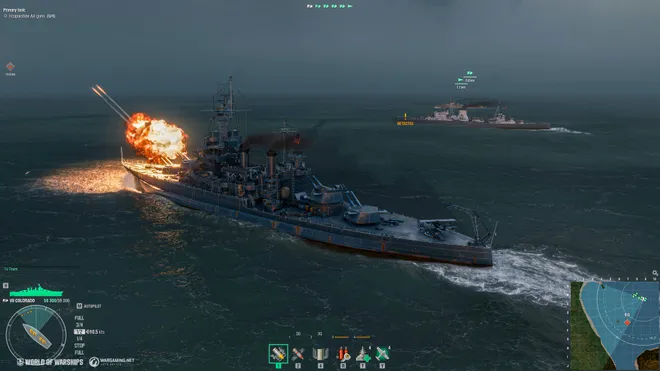
What is D-Day? When did it happen?
It would be more than four years into World War II – Germany's invasion of Poland in September 1939 set off the global conflict – when the major Allied forces including the U.S., Great Britain, France and Russia sought an invasion to weaken an already spread-thin German army, according to History.com.
The operation involving the largest sea and air armada ever assembled, Graff notes in his book, had been in the works for years.
Crucial preparation began in December 1943 after President Franklin D. Roosevelt named General Dwight D. Eisenhower the Supreme Commander of the Allied Expeditionary Force, notes the National World War II Museum.

Why is D-Day still important today?
It's simple, President Clinton said during events observing the 50th anniversary in France. "They gave us our world," he said.
Those troops who executed the invasion "mean everything to us," said Sgt. Nathan Rogers, a 23-year-old Army Ranger at the time attending the ceremony. "We wouldn't have existed if not for them. They definitely set the standard."
In collecting more than 5,000 personal stories of participants in D-Day in writing his new book, Graff said he learned crucial insights from the participants.
"Sure, we recognize now that D-Day was a Herculean heroic triumph, but listen to the voices of the Allied troops crossing the Channel on an armada of ships on the night of June 5th and there’s little sense that what they’re doing is historic or heroic," he said. "They have no idea what lies ahead. They’re concerned about whether they’ll live to see the end of the day."
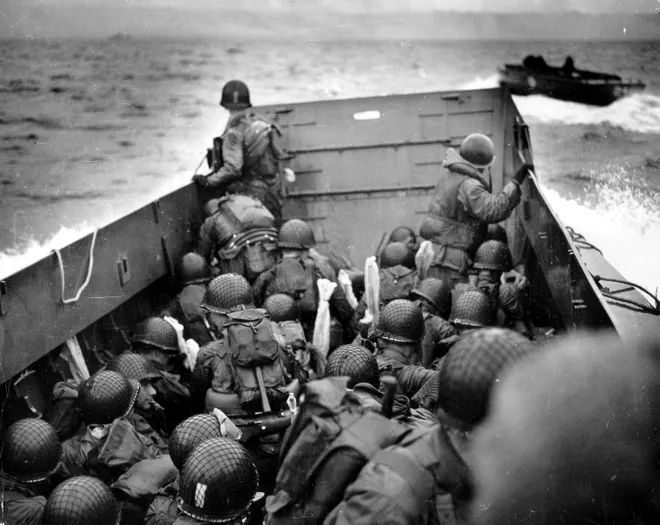
What does D-Day stand for?
The answer is simpler than you might think. The D actually stands for "Day," because it is a coded designation used for the day of any important invasion or military operation. So actions four days ahead of the actual operation, for instance, would be D-4, according to the U.S. Army.
What was Operation Overlord?
Operation Overlord, the code name for the D-Day invasion, involved transporting of more than 150,000 infantry troops across the English Channel into German-occupied France.
More than 1.5 million U.S. Army personnel had arrived in the U.K. by the end of May 1944 to participate or support the operation, according to the National World War II Museum. Overall, more than 2 million soldiers from the U.S. and 250,000 from Canada had arrived by June in preparation for, and to support, the invasion, according to History.com. Also delivered: 450,000 tons of ammunition as part of 7 million tons of supplies.
Operation Overlord also contained a fake operation called Operation Fortitude to convince Hitler the Allies would attempt to land in Norway and Pas-de-Calais in France, according to the Imperial War Museum. The plot, concocted over months, included a fake army, led by General George Patton, and readying in England for the channel crossing, notes History.com.
Another fictitious force, the British Fourth Army, stationed in Scotland to threaten Norway where Hitler's U-boats were based, "existed only on the airwaves," wrote historian Stephen Ambrose in "D-Day: June 6, 1944: The Climactic Battle of World War II." British officers and German spies sent realistic radio messages to convince the Germans of the operation's authenticity and wooden fake bombers were deployed.
These ruses were successful enough that Hitler considered the Normandy invasion, as it was initiated, was actually a ploy to divert attention from Calais. "They had placed the bulk of their panzer divisions north and east of the Seine River, where they were unavailable for counterattack in Normandy," wrote Ambrose, who also authored "Band of Brothers."
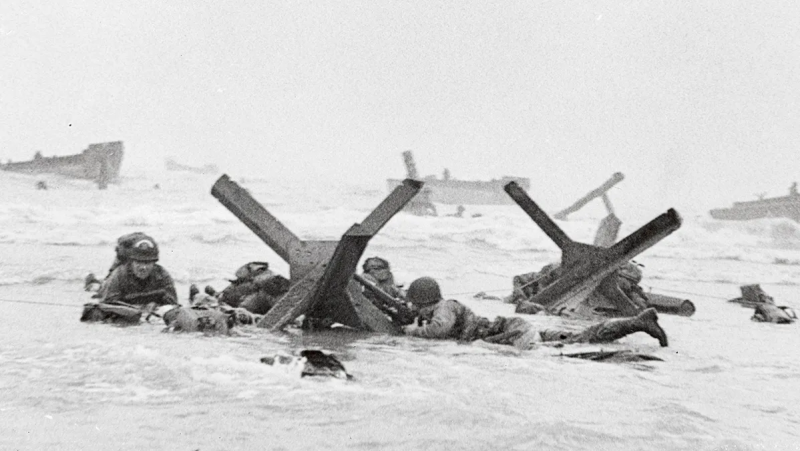
Did D-Day go according to plan?
After years of planning for Operation Overlord, soldiers still faced incredible challenges upon landing on the beaches of Normandy as the intricate operation didn't go according to plan.
"Even with … tactical and strategic advantages and more than a year of planning, D-Day’s success was a close call, achieved only at an astounding cost of more than 10,000 Allied troops killed, wounded or missing," said now-retired Gen. Jeff Harrigian, who penned a D-Day anniversary observance editorial on USATODAY.com in 2021. At the time, Harrigian was the commander of the U.S. Air Forces Europe, U.S. Air Forces Africa and Allied Air Command at Ramstein Air Base in Germany.
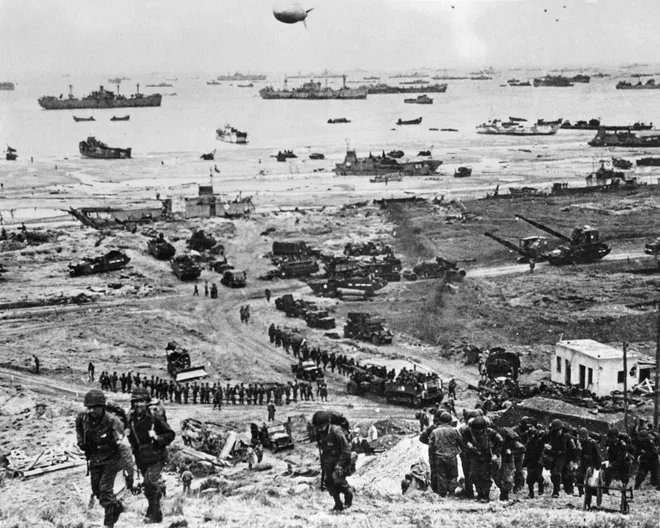
Complications began when weather caused cancellation of the original date Eisenhower had chosen, which was June 5, 1944.
Anti-aircraft fire caused pilots to fly planes faster than expected and that meant paratroopers, dropped in the morning behind enemy lines to cut off supply routes, missed their landing targets, History.com details.
During the Allied forces' landing, the U.S. landing force for Utah Beach was blown off course. The U.S. landing at Omaha Beach, where the fiercest fighting was seen, was affected by winds and tide, too.
As troops emerged from landing boats on the long, flat Omaha Beach, they were pinned down by enemy machine-gun fire from the cliffs above. “If you (stayed) there you were going to die,” Lieutenant Colonel Bill Friedman told the National World War II Museum. “We just had to ... try to get to the bottom of the cliffs on which the Germans had mounted their defenses.”
U.S. and British destroyers arrived to attack enemy positions and support the troops including those attempting to commandeer the critical Pointe du Hoc, a German-held clifftop between Omaha and Utah beaches, according to the Naval History and Heritage Command site.
By the end of the day, about 156,000 Allied troops had successfully landed and taken Normandy’s beaches.
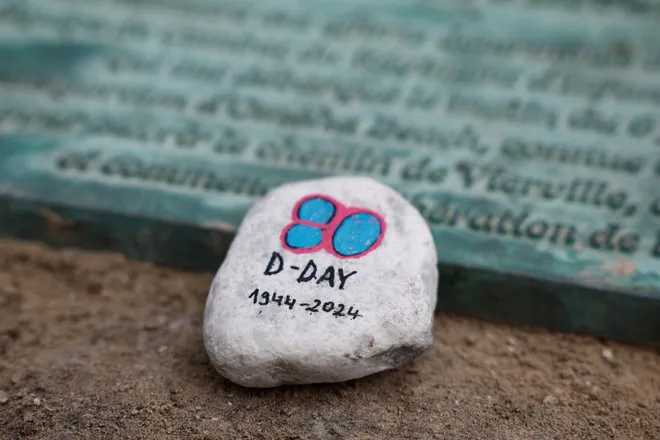
How did D-Day succeed?
Operation Overlord involved more than 11,000 planes and more than 5,000 ships and landing craft, along with 50,000 vehicles, according to the National World War II Museum.
"The plan had called for the air and naval bombardments, followed by tanks and dozers, to blast a path through the exits so that the infantry could march up the draws (ravines) and engage the enemy, but the plan had failed, utterly and completely failed," Ambrose wrote. "As is almost always the case in war, it was up to the infantry. It became the infantry's job to open the exits so that the vehicles could drive up the draws and engage the enemy."
Junior officers and noncommissioned officers "saw at once that the intricate plan … bore no relationship whatsoever to the tactical problem they faced," he wrote.
Their training "had prepared them for this challenge. They sized up the situation, saw what had to be done, and did it," Ambrose wrote.
Sgt. John Ellery, of the 16th Infantry Regiment of the First Infantry Brigade, also known as "The Big Red One,” was in the first wave to hit Omaha Beach. He told survivors around him, "we had to get off the beach and that I'd lead the way," and climbed up the bluff to use grenades to take out a machine gun position, Ambrose wrote in "D-Day."
"We sometimes forget, I think, that you can manufacture weapons, and you can purchase ammunition," Ellery is quoted by Ambrose, "but you can't buy valor and you can't pull heroes off an assembly line."
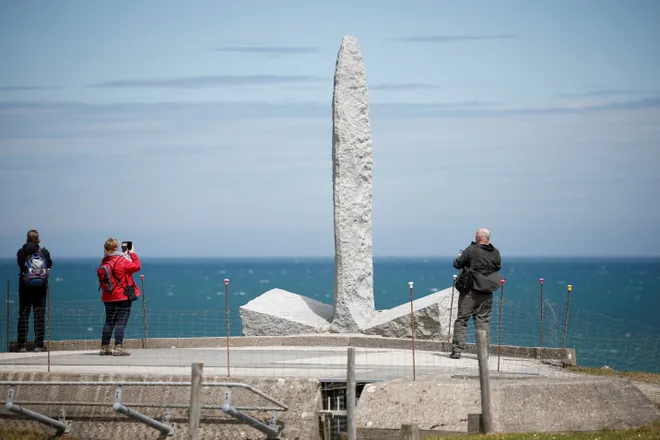
Now many soldiers died on D-Day?
- 4,415 Allied soldiers died on D-Day, with U.S. servicemen accounting for 2,502 of the death and 1,913 Allied soldiers from seven other nations, according to The National D-Day Memorial Foundation.
- Between 4,000 and 9,000 German soldiers were killed, wounded or missing in action.
- About 200,000 German prisoners of war were captured.
- An estimated 12,200 French civilians died or went missing during the battle, according to Encyclopedia Britannica.
The invasion proved successful: Paris was liberated from the Germans on Aug. 25, 1944 and on May 7, 1945, less than a year after the D-Day invasion, Germany surrendered.
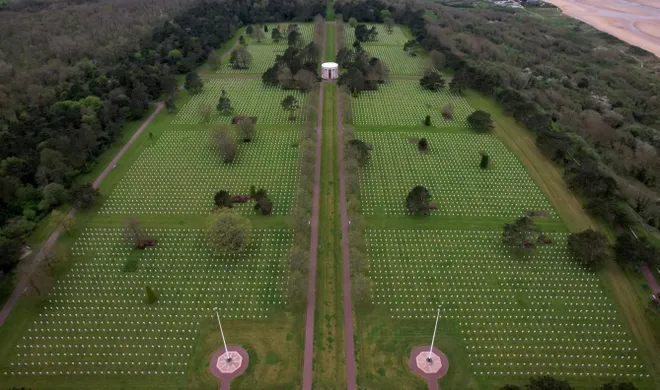
Special online D-Day observations
Here are some ways to observe the 80th anniversary of D-Day.
- The National World War II Museum: The museum in New Orleans has events all day on Thursday and you can watch online. The program begins with a remembrance gathering at 6:30 a.m. ET and a performance by the 29th Division Band at 9 a.m. You can register for virtual attendance on the museum's website.
- “Frog Fathers: Lessons from the Normandy Surf": This new documentary about the history of the Naval Combat Demolition Units, known today as the Navy SEALs, follows four veterans who visit Normandy. The doc is currently available on the Fox Nation streaming service ($7.99 monthly or $59.88 annually after 7-day free trial). Starting Tuesday, June 11, you can watch it on MagellanTV ($5.99 per month or $59.98 per year after a free 7-day or 14-day trial) or on the World of Warships YouTube channel.
- World of Warships: The free historical online naval battle video game has special missions related to the D-Day invasion playable this month on PCs and consoles.
Follow Mike Snider on X and Threads: @mikesnider & mikegsnider.
What's everyone talking about? Sign up for our trending newsletter to get the latest news of the day
Disclaimer: The copyright of this article belongs to the original author. Reposting this article is solely for the purpose of information dissemination and does not constitute any investment advice. If there is any infringement, please contact us immediately. We will make corrections or deletions as necessary. Thank you.





